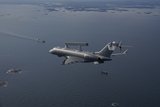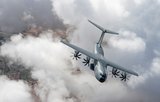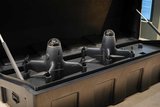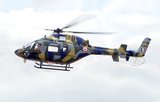CAE delivers first magnetic anomaly detectors for Japanese maritime patrol aircraft fleet
CAE has delivered the first MAD-XR sensors for installation in new Kawasaki P-1 maritime patrol aircraft operated by the Japan Maritime Self-Defense Force. (Photo: Kawasaki Heavy Industries)
CAE has announced delivery of the first production Magnetic Anomaly Detection-Extended Role (MAD-XR) systems, following completion of customer source inspection.
The MAD-XRs were delivered to Mitsubishi Electric Corp (MELCO) for installation in new Kawasaki P-1 maritime patrol aircraft (MPA) operated by the Japan Maritime Self-Defense Force (JMSDF).
Delivery of these systems is under a multi-year contract for integration, installation and sustainment of the sensor in support of JMSDF fixed wing anti-submarine warfare (ASW) operations.
Related Articles
Japan Maritime Self-Defence Force begins trials with MQ-9B SeaGuardian UAS
Why the Philippines is still awaiting long-range patrol aircraft after a decade
CAE takes US Army flight school training support subcontract
MAD-XR is a sensitive magnetometer used as a sensor to detect submarines. The MAD-XR offers increased range and sensitivity coupled with reduced size, weight and power requirements compared to legacy systems, CAE says.
'The extended capabilities of this powerful sensor allow it to be used in a wide variety of manned and unmanned platforms providing defence forces with enhanced submarine detection and localisation capabilities under challenging environmental and operational conditions,' said Marc-Olivier Sabourin, VP and GM, CAE Defense and Security, International.
The delivery of the system continues a longstanding relationship between CAE and MELCO dating back to 2004.
According to Shephard Defence Insight, the total requirement of P-1 aircraft for the JMSDF has not been determined, with the projections ranging from 58-65 aircraft. In its 2021 Defence White Paper, Japan confirmed it had 29 aircraft in service.
.The P-1 integrates an array of sensors and mission systems. These consist of a Toshiba active electronically scanned array radar, an electronic support measures system for monitoring low frequencies, the MAD-XR, various EO/IR cameras and acoustic sensors. Sensor data is processed by a combat direction system, which assists the crew in making quick decisions.
Related Programmes in Defence Insight
Related Equipment in Defence Insight
More from Air Warfare
-
![Dubai Airshow 2025: Edge Group eyes international market expansion, unveils new UAVs]()
Dubai Airshow 2025: Edge Group eyes international market expansion, unveils new UAVs
The UAV portfolio expansion comes in the wake of the Edge-Anduril joint venture announced ahead of the airshow.
-
![India reopens hunt for reconnaissance and surveillance helicopters]()
India reopens hunt for reconnaissance and surveillance helicopters
The extended deadline for vendors highlights the complexity of the procurement for India, with numerous vendors positioning themselves for the programme.
-
![Dubai Airshow 2025: Lockheed’s AGM-158 XR flight tests planned for 2026]()
Dubai Airshow 2025: Lockheed’s AGM-158 XR flight tests planned for 2026
The AGM-158 XR, which started as a Lockheed Martin internal investment, was first unveiled in September 2024.





















